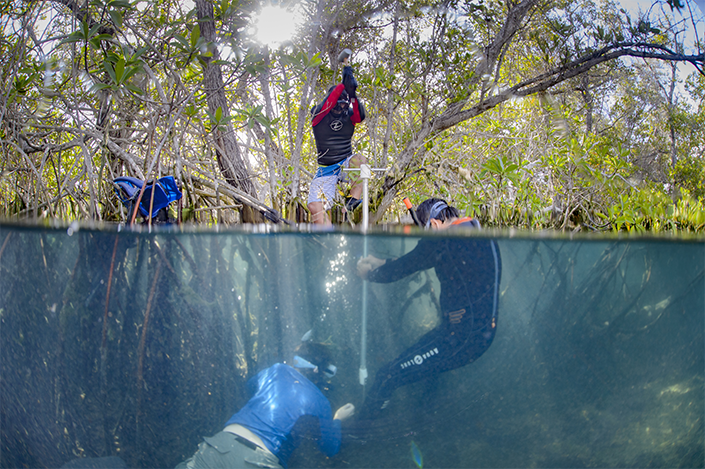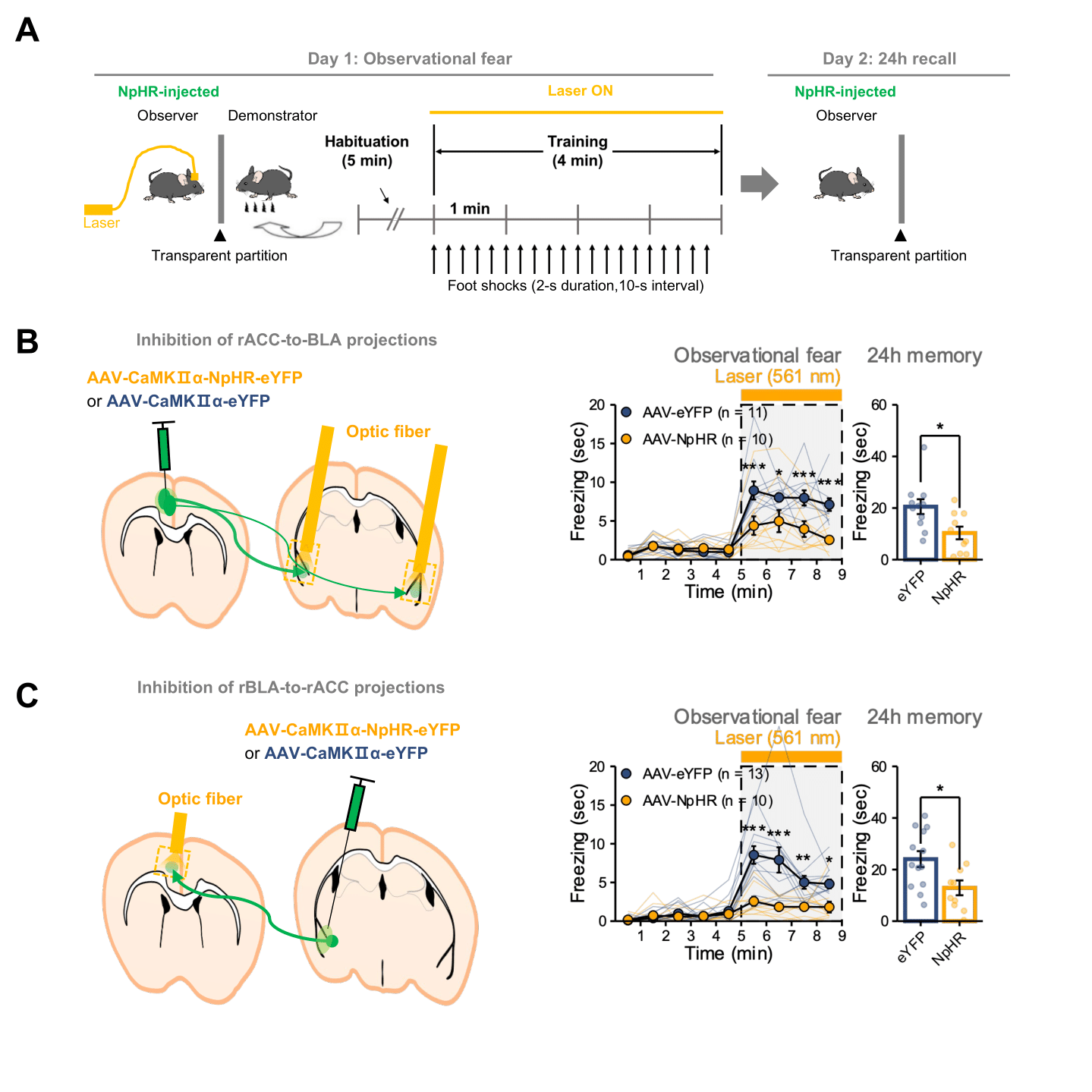サンディエゴからガラパゴス諸島まで、スクリプス海洋学の研究者たちは、水生生態系における炭素隔離の謎を解き明かしています。 From San Diego to the Galapagos Islands and beyond, Scripps Oceanography researchers are revealing the mysteries of carbon sequestration in aquatic ecosystems
2022-12-02 カリフォルニア大学サンディエゴ校(UCSD)
 Researchers Ismael Mascarenas, Juan José Cota-Nieto, and Matthew Costa drive a sediment corer into the flooded mangrove forest floor to collect a sample in the Galapagos Islands. Photo credit: Octavio Aburto-Oropeza
Researchers Ismael Mascarenas, Juan José Cota-Nieto, and Matthew Costa drive a sediment corer into the flooded mangrove forest floor to collect a sample in the Galapagos Islands. Photo credit: Octavio Aburto-Oropeza
その結果、堆積物の最大深度が7~427センチメートルと異なることで、その地域の炭素蓄積量のばらつきが大きく説明されることが明らかになった。これらの結果は、炭素蓄積量を推定するために堆積物の深さを測定することの重要性を強調している。
ラテンアメリカの多様な遠隔環境の堆積物コアを分析したところ、地域によって堆積物の深さに大きな違いがあることが明らかになった。例えば、ガラパゴス諸島のような異なる地域内では、数マイルしか離れていない場所でも堆積物の深さに「膨大な」ばらつきがあることがわかった。
<関連情報>
- https://today.ucsd.edu/story/scientists-dig-into-sediments-for-clues-on-carbon-storage
- https://aslopubs.onlinelibrary.wiley.com/doi/10.1002/lno.12241
様々な気候・地質環境におけるマングローブの地下炭素蓄積量を形成する堆積物の深さと堆積量 Sediment depth and accretion shape belowground mangrove carbon stocks across a range of climatic and geologic settings
Matthew T. Costa,Exequiel Ezcurra,Paula Ezcurra,Pelayo Salinas-de-León,Benjamin Turner,Joy Kumagai,James Leichter,Octavio Aburto-Oropeza
Limnology and Oceanography Published: 21 October 2022
DOI:https://doi.org/10.1002/lno.12241
Abstract
Estimating the long-term sedimentary carbon sinks of mangroves and other blue carbon ecosystems has rapidly become a focus of coastal research and conservation attention. Sampling coverage, however, remains low, with sediment cores sparsely distributed across a subset of mangrove environmental settings globally. Furthermore, the ecological and geological drivers of variation in these stocks remain incompletely understood. We assessed the limits of mangrove sedimentary carbon storage by sampling sediments in diverse mangrove environments across four geographic areas: the volcanic Galapagos, the arid Baja Peninsula, and the geologically and climatically distinct Caribbean and Pacific coasts of Panama. At 80 sites across these areas, we quantified the organic carbon density, sampled with depth, of entire sediment columns. Depth-integrated carbon stocks are highly variable, from <17 to >1700 MgCorg ha-1. The positive relationship between sediment carbon density and annual rainfall demonstrated in global studies was not observed across these areas, though some carbon density differences were evident. Variation in sediment depth, ranging from 7 to 427 cm across sites, largely explained variation in carbon stock across the areas studied. These results underscore the importance of using measurements of sediment depth to estimate carbon stock. Long-term geomorphological processes, such as the build-up of sediment deposits shaped by coastal dynamics, play a major role in shaping mangrove carbon stocks. Investigating and accounting for these processes will enable more accurate estimation of this variable and valuable carbon pool.


